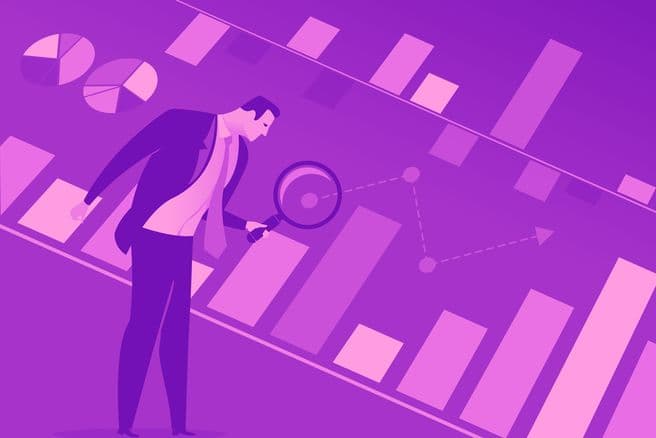Data analysis is revolutionizing all aspects of business operations. Businesses use it to generate actionable insights and make informed decisions. Procurement data analytics can help your team optimize your purchasing strategy and meet business goals.
What Is Procurement Data Analytics?
As with other types of data analysis, procurement analytics evaluates data from multiple sources related to procurement and uses it to optimize your processes for sourcing materials and supplies for your business. Often this data is hidden in contracts and would be difficult and time-consuming to extract by hand. AI-powered analytical software can handle the job much faster and more accurately than doing it manually.
Importance of Data Analytics in Procurement
In today’s uncertain business environment, organizations are often operating on razor-thin margins. Big data allows you to analyze and evaluate all of your expenses and use procurement metrics to find new opportunities to increase profitability.
 Types of Procurement Analytics
Types of Procurement Analytics
You can use different types of procurement analytics depending on the type of procurement processes you want to optimize. Each one will give you actionable insights into how you can make changes to reduce your costs.
Descriptive Analytics
If you want to answer the question, “What happened?” you can use descriptive analytics to help you understand what happened in the past. This model analyzes historical data and uses it to uncover patterns and relationships.
Diagnostic Analytics
Running diagnostic analytics can tell you why something happened. If you notice a specific trend, you can use diagnostic analytics to find the underlying causes. You can use this information to take corrective action if the trend is negative, or reproduce it if the trend is positive.
Predictive Analytics
When you’re wondering, “What’s going to happen in the future?” you can use predictive analytics to find the answer. Businesses use predictive analytics to forecast sales and expenses, predict the weather, determine staffing needs, and more.
Prescriptive Analytics
You can also use analytics to answer the question, “What should we do?” Prescriptive analytics is often used in conjunction with predictive analytics to help organizations make informed decisions based on facts and data-based projections rather than guesswork or hunches.
Practical Applications of Procurement Analytics
Your procurement team can use all four types of analytics to inform their procurement processes and improve outcomes.
Spend Management
Procurement analytics can give you insights into how you can develop sourcing strategies that will reduce costs while aligning with broader business objectives such as fairness and sustainability. Ultimately, you can use the data to maximize value, minimize risk, and improve your supplier relationships.
Supplier Evaluation
You can mine your contract data to use in procurement analytics and evaluate your supplier performance. Procurement analytics lets you determine which suppliers provide the best value, and equip you with the data you need to further improve their performance. Analytics can help you solve vendor relationship management challenges in a way that’s effective for both parties.
Strategic Sourcing
Effective sourcing goes beyond finding the lowest price to include quality and delivery time. AI-powered software can use data in your contracts and other historical data to generate reports that help you transform procurement with contract intelligence.
Contract Management
With procurement analytics, you can improve contract management at all phases, from creation to execution. AI applications can analyze deliverables, deadlines, and contract terms to identify the most favorable parameters. You can then use this information to craft better contracts.
Data Sources for Procurement Management
In the era of big data analytics in procurement, you have access to more data than you can possibly use. To get high-quality results, you need high-quality data.
Internal Data Sources
Your company’s internal documents, such as contracts and financial reports, will provide much of the procurement data you need. These internal data sources provide information such as previous purchase prices and profit margins that your analytics program can use.
External Data Sources
You’ll also need to consider external data sources such as market conditions, increases in the price of raw materials, and global regulations. These outside forces will also affect your procurement analytics and you will need to factor them into your overall analysis.
Key Performance Indicators (KPIs) in Procurement Analytics
The procurement KPIs you should track will depend on your business goals and desired outcomes, but some that are valuable for everyone include:
Supplier quality rating
Number of suppliers
Procurement return on investment (ROI)
Compliance rate
Procurement cost avoidance
 Benefits of Leveraging Data Analytics
Benefits of Leveraging Data Analytics
Data analytics for procurement gives you unbiased, factual insight into your procurement processes. The benefits of this type of insight include the following.
Cost Reduction
By closely analyzing your procurement practices, you can save money and improve the quality of the materials and other supplies you purchase. This allows you to reduce your overall costs and maximize profitability.
Improved Decision-Making
Data analytics will empower you to make better procurement decisions. You can base your decisions on your own historical data as well as external trends. If you do pay more for products or services, you can rest assured that it isn’t because you’re making bad decisions.
Enhanced Operational Efficiency
Analytics can drive increased operational efficiency across your entire procurement sourcing and supplier management lifecycle. Although you can reduce costs, you’ll also be able to consider other factors such as value, sustainability, and performance.
Future Trends in Procurement Analytics
Procurement analytics models are changing rapidly, along with the AI field in general. You will likely see more reliance on AI-driven tools to improve resource allocation and optimize performance. As more manufacturers adopt smart technology, you’ll also see improved visibility throughout the procurement and supply chain lifecycles.
The Impact of AI on Procurement Analytics
Artificial intelligence is at the heart of procurement analytics. AI tools such as natural language processing can extract meaning from contract language and use it to extract data. Machine learning tools analyze this data and use it to display historical trends, make predictions about the future, and prescribe a course of action to achieve business goals.
To learn more about leveraging the power of AI to improve your procurement strategy, reach out to the team at Terzo for a free consultation.




